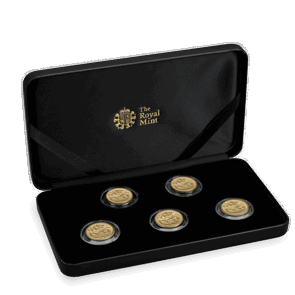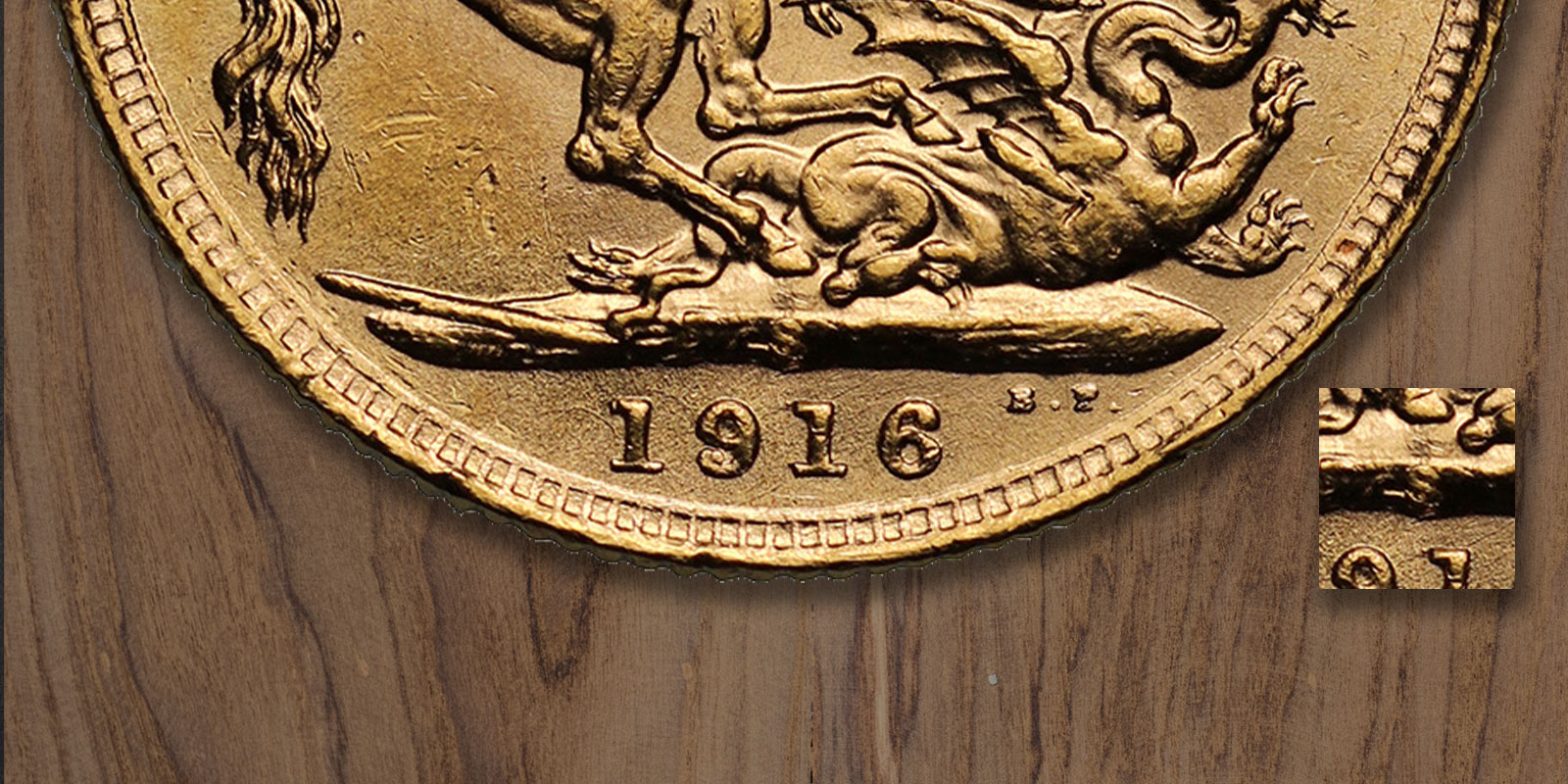
Australian Mint
In 1817, when the modern Sovereign was introduced in Britain, there were only about 14,000 convicts and free settlers in Australia. They had nothing to export and had to import basic essentials, which mostly came from China where the main coin used by traders was the Spanish dollar. The shift back towards the use of British coins began in the 1820s as Australia began to export agricultural produce and by 1829, Australian banks were holding an estimated £20,000 in Sovereigns. By 1852, coins of the United Kingdom passed as currency in the colony.
The discovery of gold in Australia in 1851 led to calls for the establishment of a branch of The Royal Mint in order to strike Sovereigns. Permission was finally granted in August 1853 and the new mint opened in Sydney in May 1855. Sovereigns struck there were identical in weight and fineness to those made in London, but were more yellow in appearance owing to the inclusion of silver in the alloy. The design was also different from the Sovereigns produced in London and initially they were only legal tender in Australia.
In January 1871, a Royal Proclamation authorised the Sydney branch mint to start striking Sovereigns featuring the same designs as those minted in the UK, with the only difference being the inclusion of a small ‘S’ mint mark. A second branch mint in Australia was opened in Melbourne in June 1872, producing coins with an ‘M’ mint mark, and a third branch in Perth commenced operations in June 1899, whose coins featured a small ‘P’ as their mint mark. All die work for the Australian Sovereign was initially prepared by The Royal Mint in London and the branch mints had to purchase master tools directly from London.
After 1871, the branch mints were free to choose which of the authorised Sovereign designs they wished to strike – the St George and the dragon or the shield. Due to public demand, they continued to strike the shield design long after production had come to an end in London. Minting of the shield design ceased in 1887, but the branch mints continued to strike Sovereigns until 1931 when Melbourne and Perth stopped production. The branch mint in Sydney had already closed down some years earlier in 1926.
Royal Canadian Mint
From the other side of the world to the other side of the Atlantic, the history of The Sovereign also extends west to Canada. The separate provinces that make up the country we know today were not brought together until confederation in 1867. Prior to this, there appears to be very limited use of Sovereigns in the provinces of Canada and British coins were rarely seen in the country, but provision was made for their use.
After confederation, an Act in 1867 led to the establishment of the first currency legislation assimilating the currency of New Brunswick and the two Provinces of Canada to that of the United States. This was later repealed by the Dominion Act of 1871 establishing the dollar, cents and mills as the currency of the whole Dominion of Canada. The gold coins of the United States were adopted for circulation concurrently with the British Sovereign, although very little gold coinage circulated in Canada. The majority consisted of United States gold coins, with a few Sovereigns found around Halifax where British troops were stationed.
When gold was discovered in the Yukon in 1900, the Canadian government sought the right to mint Sovereigns. The following year, the Canadian House of Commons resolved to fund a branch of the Royal Mint in Ottawa. Building work finally began in 1905 and the first coins were struck three years later. The minting of Sovereigns was never extensive and by the time it came to an end in 1919, fewer than one million had been struck. The Canadian government retained a branch of The Royal Mint until the option of striking Sovereigns ceased to be realistic. It’s no coincidence that the Sovereigns struck in that last year were in Australia, 1931, the same year Ottawa ceased to be a branch of The Royal Mint.
India Mint
Although India didn’t experience a gold rush of its own, as a result of naval blockades, gold bound for London from South Africa was diverted to the region during the First World War, and for one year only, Sovereigns were struck here.
The coin was already well established in this part of the world. Sovereigns struck in Australia were particularly popular in India on account of their yellow colour and many Indian banks had agents in the Australian goldfields to buy the gold at source, to be minted and then sent via Sri Lanka to India.
In 1917, at the request of the Indian government, arrangements were made for Sovereigns to be minted in India itself. The Bombay Mint Proclamation of 21 December 1917 authorised the establishment of a branch of The Royal Mint which was constructed within the grounds of the existing mint and was equipped with striking blanks by the Bombay Mint.
Over 1 million Sovereigns were struck in 1918, distinguished from other Sovereigns by the inclusion of a small ‘I’ mint mark, but by 1919 no blanks were forthcoming and the branch mint closed. Nevertheless, it struck more Sovereigns in its single year of operation than the Ottawa branch managed in more than twenty.
South Africa Mint
The end of the Boer War in 1902 led to the annexing of the Transvaal and Orange Free State into the British Empire and in 1910 the Union of South Africa was formed. Initially, UK coins formed the basis of the new Union’s currency and British gold coins were legal tender to any amount.
The last branch of The Royal Mint was established at Pretoria with the aim of turning locally mined gold into coins. Striking began in 1923 and the branch mint produced both the distinctive national coinage of South Africa and Sovereigns displaying the small mint mark ‘SA’ to denote where they were struck. Production peaked in 1928 when more than 18 million Sovereigns were struck and the mint continued to issue Sovereigns until 1932. The end of production here brought the era of the branch mint Sovereign to a close.
Branch Mint Sovereigns
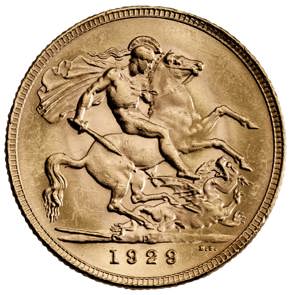
1929 George V Sovereign Perth Mint Mark
Extremely Fine Condition
Price: £660.00
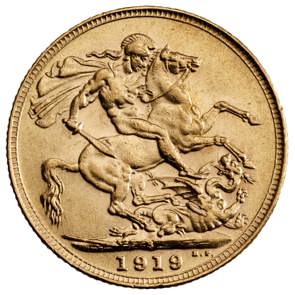
1919 George V Sovereign Sydney Mint Mark
Extremely Fine Condition
Price: £620.00
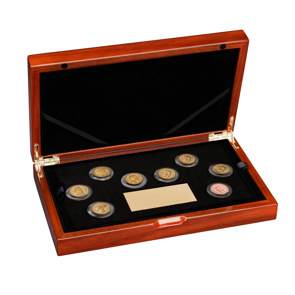
Chief Coin of the World Set
Limited Edition 250
Price: £4,242.00
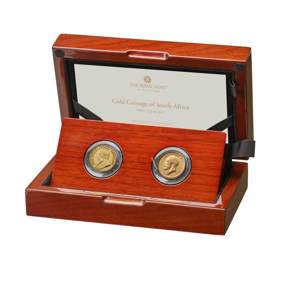
Gold Coinage of South Africa 2-coin Set
Limited edition 499
Price: £999.00
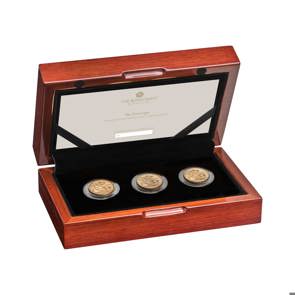
The Melbourne Branch Mint Three-Coin Set
Limited Edition 150
Price: £1,350.00
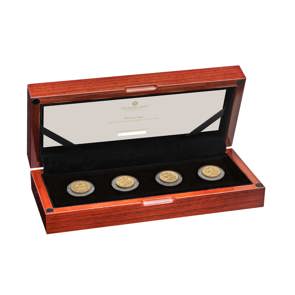
Australian Branch Mints Four-Coin Set
Limited Edition 100
Price: £3,000.00
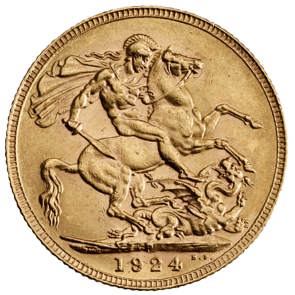
George V Sovereign 1924 Perth Mint Mark
Extremely Fine Condition
Price: £575.00

